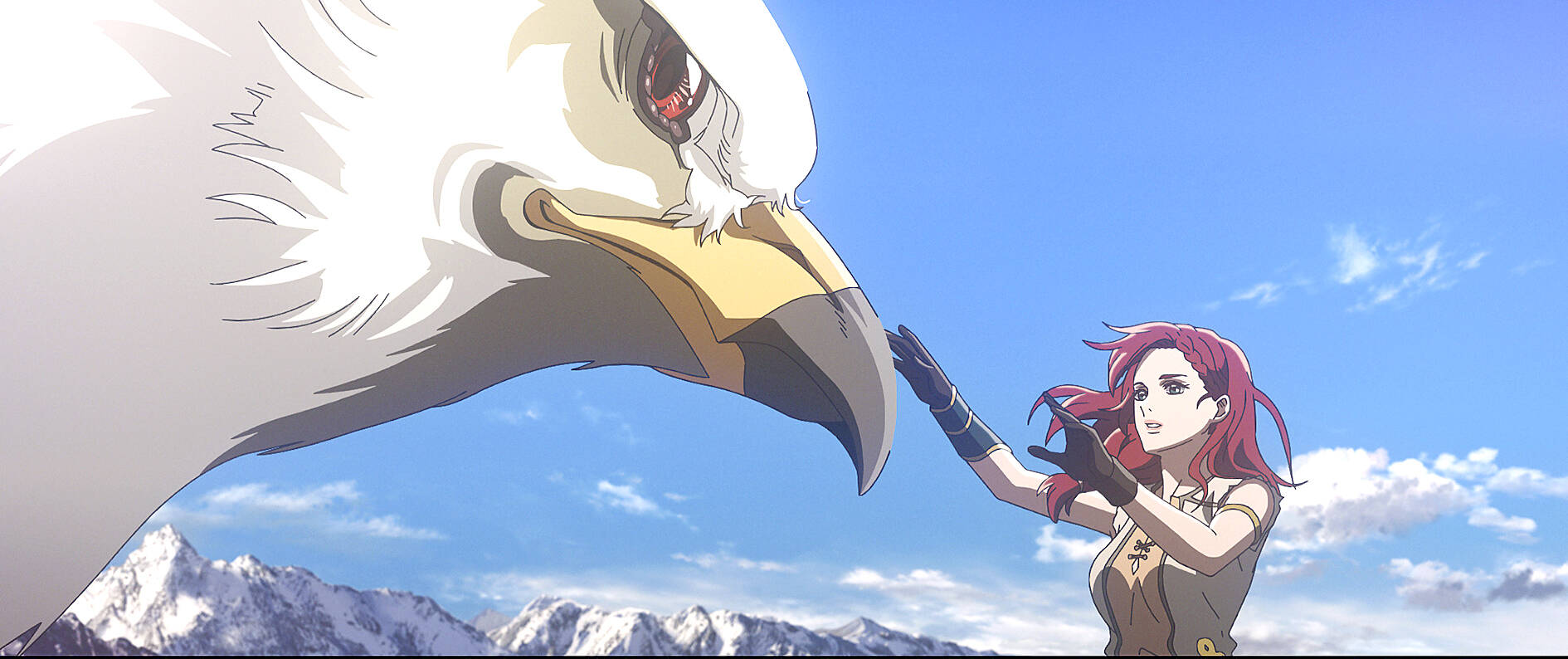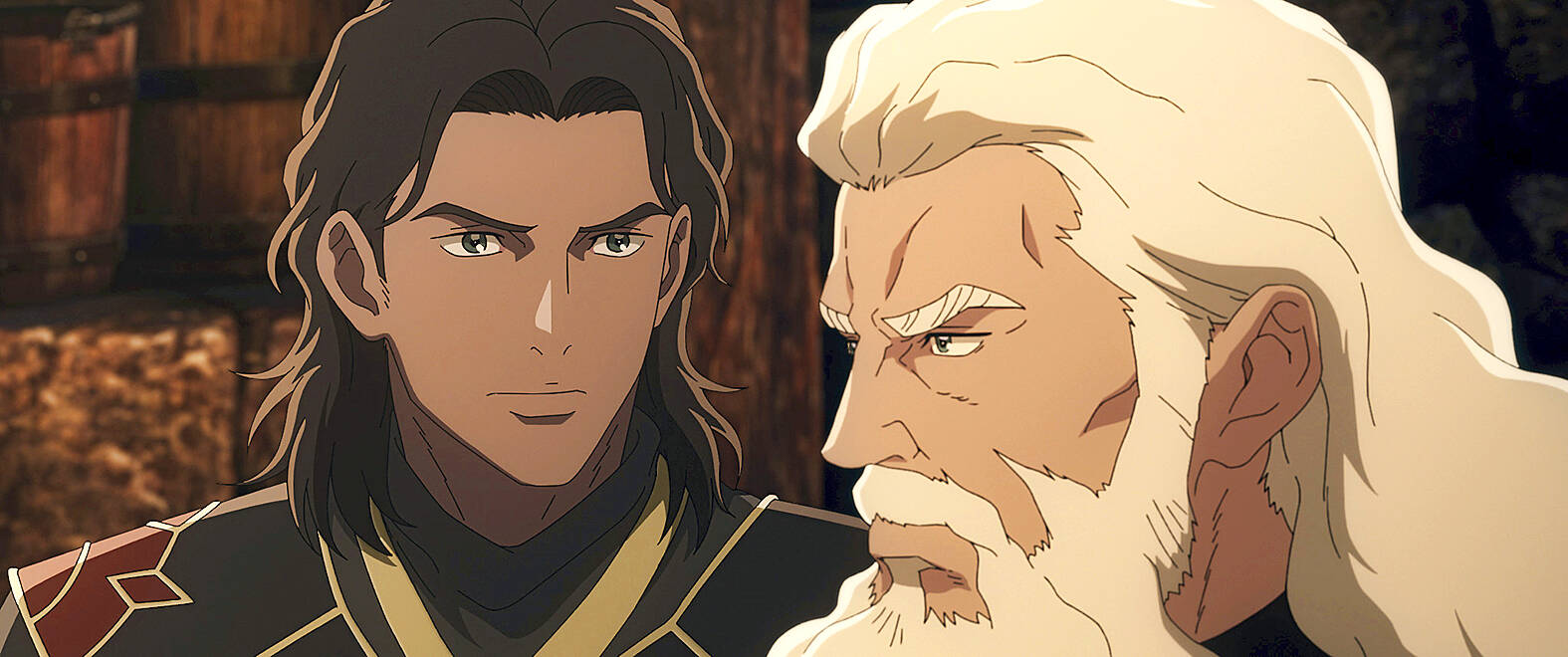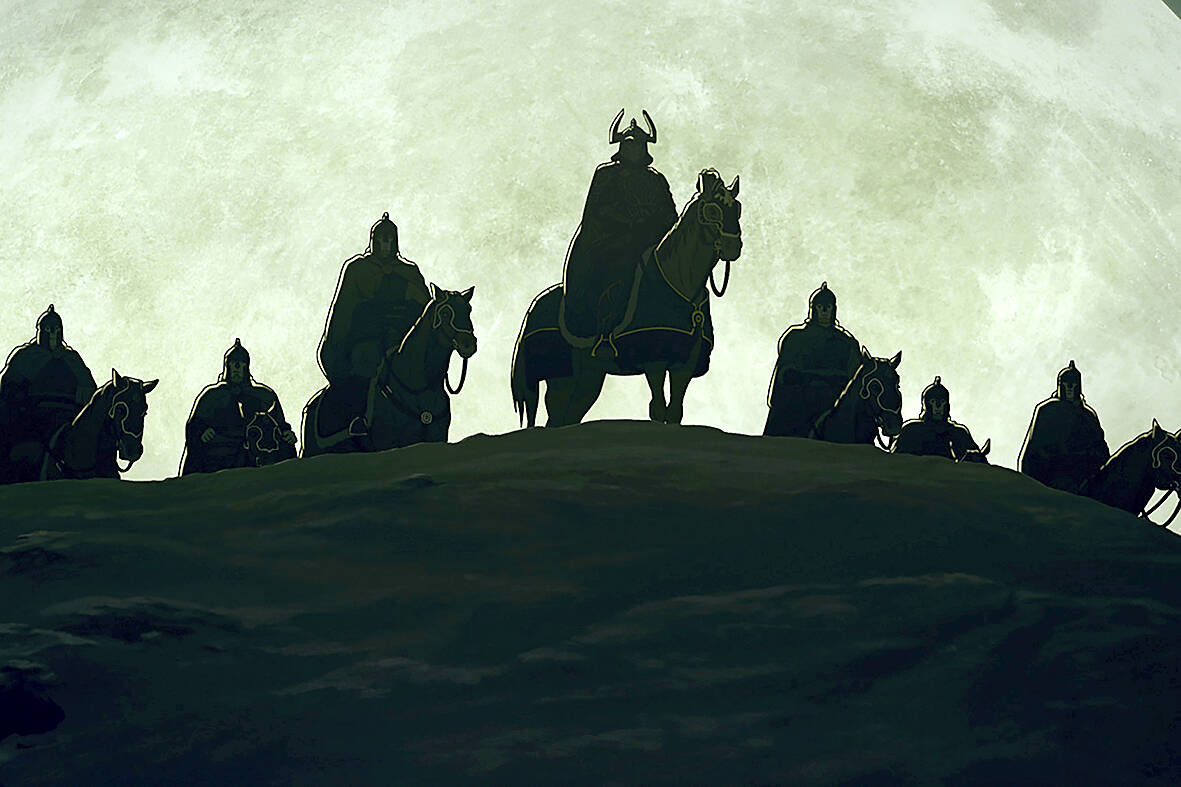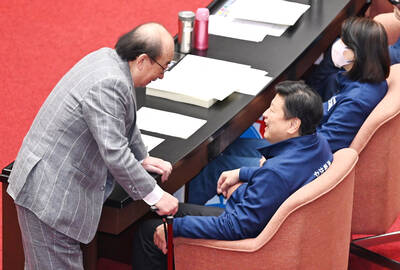It’s a discombobulating experience, after a Lord of the Rings trilogy that was built, down to every frame and hobbit hair, for the big screen, to see something so comparatively minor, small-scaled and TV-sized as The Lord of the Rings: The War of the Rohirrim.
The film, set 183 years before the events of The Hobbit, is a return to Middle-earth that, despite some very earnest storytelling, never supplies much of an answer as to why, exactly, it exists.
Rohirrim, which sounds a little like the sound an orc might make sneezing, is perhaps best understood as a placeholder for further cinematic universe extrapolation from J.R.R. Tolkien’s books. (A live-action movie about Gollum is due out in 2026.) Here, the thin basis in Tolkien comes from the Lord of the Rings appendix, which lists a history of Rohan, the plains kingdom south of the Elven forest of Lothlorien.

Photo: AP
A small army of screenwriters — Jeffrey Addiss, Will Matthews, Phoebe Gittins and Arty Papageorgiou — have from those faint embers conjured a fiery war movie, made as an anime by director Kenji Kamiyama (Ghost in the Shell: Stand Along Complex, Blade Runner: Black Lotus). The obviously talented Kamiyama fashions some dazzling vintage anime visuals that — and perhaps this isn’t all bad — feels a world apart from Peter Jackson’s Middle-earth features.
But The War of Rohirrim also feels conspicuously closer to 1990s direct-to-video release than an heir to some of the grandest big-screen fantasy storytelling of the past 25 years. Though there are many — too many — examples of Hollywood over-mining once-rich intellectual property, this dull, appendix-extracted anime adds to a not particularly Tolkienist tradition.
Tolkien diehards, though, may be grateful for whatever The Lord of the Rings morsels they can find. And there is some precedent. Before Jackson (an executive producer here) built Middle-earth in New Zealand, The Lord of the Rings prompted a pair of 1970s animated TV specials and a not-much-remembered animated 1978 movie.

Photo: AP
The War of Rohirrim concerns the adventures of Hera (voiced by Gaia Wise), daughter of Helm Hammerhand ( Brian Cox ), the Rohan king. Cox, coming off of Succession, again finds himself beset with trouble over the future of his throne.
Things get underway when Freka (Shaun Dolley), leader of the Dundelings, offers his son Wulf (Luke Pasqualino) to marry Hera and take the throne. After a swift refusal, a fight ensues, and with a mere punch, Helm accidentally kills Freka. Given how extreme Wulf’s vengeance is following this punch, it’s fair to wonder if The War of Rohirrim could have been started just as easily with a slap or, perhaps, an overly aggressive noogie.
But only self-seriousness reigns in this Lord of the Rings adventure. When the battle begins, Hera must save her people, which she strives to do by retreating to a fortress dug into a mountainside. Hera’s story is said to be one lost to history in the opening narration, but The War of Rohirrim is just as much an origin story for the stronghold that will later be known as Helm’s Deep.

Photo: AP
I don’t begrudge any Tolkien addict a little anime fun — and maybe these references and callbacks will be enough to conjure some of the majesty of the books or Jackson’s movies. You can tell Rohirrim was made with sincere belief in the world Tolkien created. But I found the connective tissue, like the few notes from Howard Shore’s original score that float in, only reinforced how such grander movie ambitions once came to Rohan. The War of the Rohirrim does manage to recapture one trait of the earlier films: at 134 minutes, it’s long.

Taiwan doesn’t have a lot of railways, but its network has plenty of history. The government-owned entity that last year became the Taiwan Railway Corp (TRC) has been operating trains since 1891. During the 1895-1945 period of Japanese rule, the colonial government made huge investments in rail infrastructure. The northern port city of Keelung was connected to Kaohsiung in the south. New lines appeared in Pingtung, Yilan and the Hualien-Taitung region. Railway enthusiasts exploring Taiwan will find plenty to amuse themselves. Taipei will soon gain its second rail-themed museum. Elsewhere there’s a number of endearing branch lines and rolling-stock collections, some

The Democratic Progressive Party (DPP), Chinese Nationalist Party (KMT), and the country’s other political groups dare not offend religious groups, says Chen Lih-ming (陳立民), founder of the Taiwan Anti-Religion Alliance (台灣反宗教者聯盟). “It’s the same in other democracies, of course, but because political struggles in Taiwan are extraordinarily fierce, you’ll see candidates visiting several temples each day ahead of elections. That adds impetus to religion here,” says the retired college lecturer. In Japan’s most recent election, the Liberal Democratic Party lost many votes because of its ties to the Unification Church (“the Moonies”). Chen contrasts the progress made by anti-religion movements in

Could Taiwan’s democracy be at risk? There is a lot of apocalyptic commentary right now suggesting that this is the case, but it is always a conspiracy by the other guys — our side is firmly on the side of protecting democracy and always has been, unlike them! The situation is nowhere near that bleak — yet. The concern is that the power struggle between the opposition Chinese Nationalist Party (KMT) and their now effectively pan-blue allies the Taiwan People’s Party (TPP) and the ruling Democratic Progressive Party (DPP) intensifies to the point where democratic functions start to break down. Both

This was not supposed to be an election year. The local media is billing it as the “2025 great recall era” (2025大罷免時代) or the “2025 great recall wave” (2025大罷免潮), with many now just shortening it to “great recall.” As of this writing the number of campaigns that have submitted the requisite one percent of eligible voters signatures in legislative districts is 51 — 35 targeting Chinese Nationalist Party (KMT) caucus lawmakers and 16 targeting Democratic Progressive Party (DPP) lawmakers. The pan-green side has more as they started earlier. Many recall campaigns are billing themselves as “Winter Bluebirds” after the “Bluebird Action”